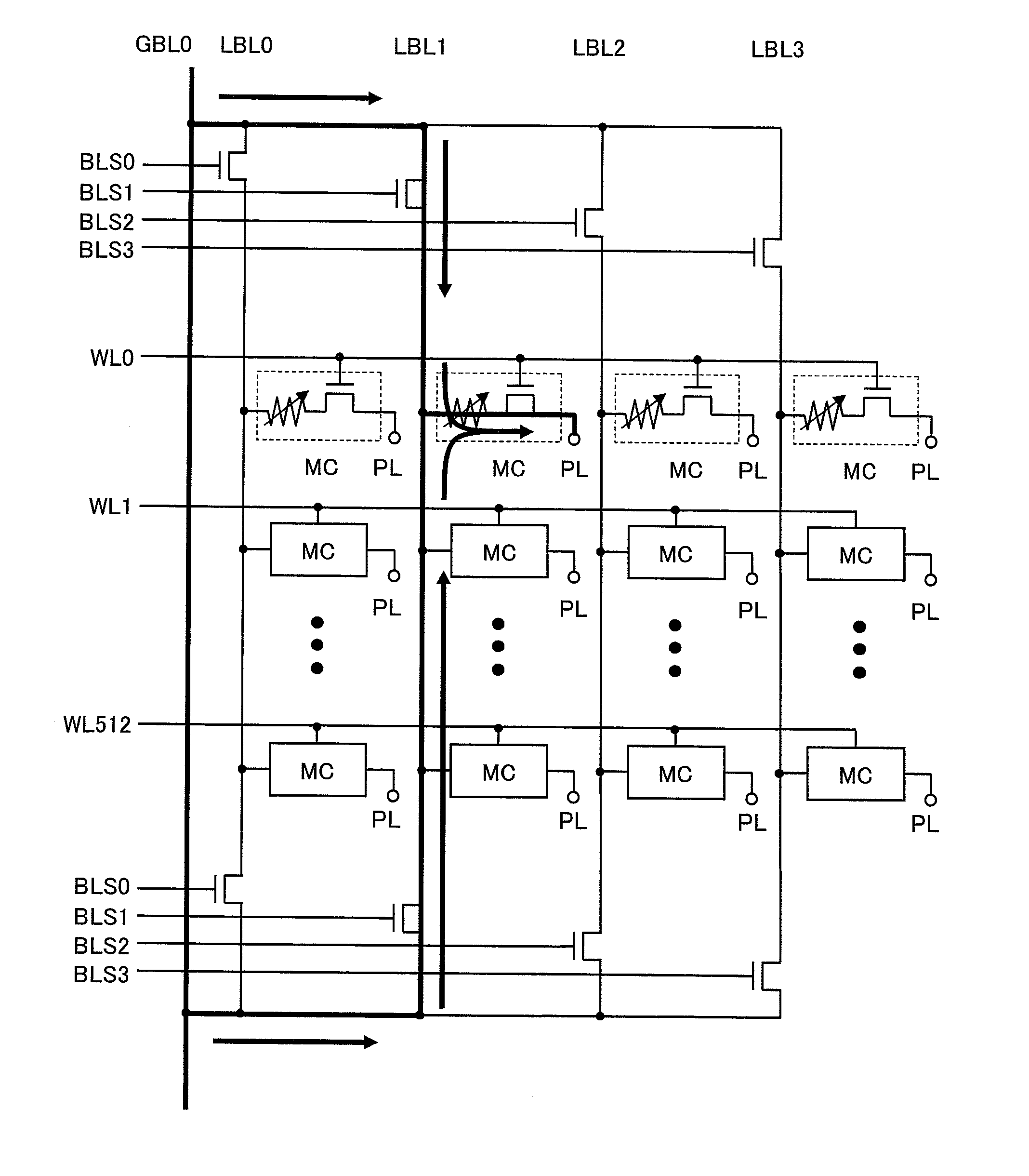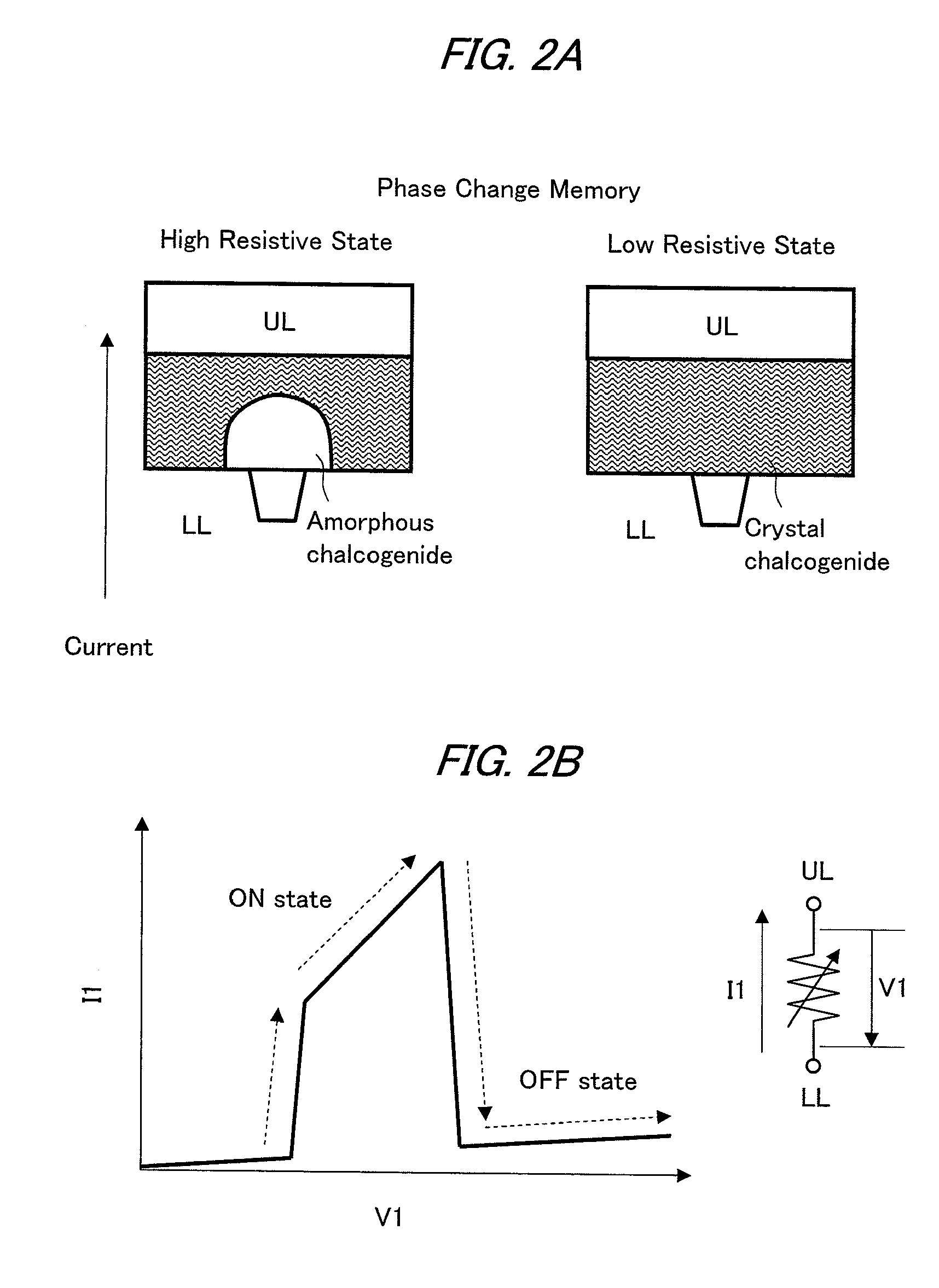Semiconductor device
a technology of resistance change and semiconductors, applied in information storage, static storage, digital storage, etc., can solve the problem of difficult manufacture of capacitors for providing sufficient signals, and achieve the effect of increasing the current of rewriting
- Summary
- Abstract
- Description
- Claims
- Application Information
AI Technical Summary
Benefits of technology
Problems solved by technology
Method used
Image
Examples
first embodiment
[0070]A semiconductor device according to a first embodiment of the present invention will be described with reference to FIG. 1 and FIG. 8 to FIG. 22.
[0071]FIG. 1 shows one example of the configuration of a memory cell array in the semiconductor device according to the first embodiment.
[0072]The memory cell array is constituted by disposing sub-memory blocks in an array, and the sub-memory block includes upside and downside bit line select switch arrays BLSA having a plurality of bit line select switches BLSW and a sub-memory cell array SMCA adjacently disposed between the upside and downside bit line select switch arrays BLSA and having a plurality of local bit lines LBL (0 to n), a plurality of word lines WL (0 to m) and a plurality of memory cells MC disposed at intersections of the plurality of word lines WL and the plurality of local bit lines LBL.
[0073]The local bit lines LBL are connected to global bit lines GBL (0 to k) in the upside and downside bit line select switch arra...
second embodiment
[0116]A semiconductor device according to a second embodiment of the present invention will be described with reference to FIG. 23 to FIG. 29.
[0117]FIG. 23 shows one example of the operation of a memory cell array in the semiconductor device according to the second embodiment.
[0118]The thick line of FIG. 23 shows a path of the current flowing into the array when information of the memory cell MC disposed at the intersection of the word line WL0 and the local bit line LBL1 is rewritten (written) from, for example, a logical value “0” to “1”. When the connecting direction of a resistance change element is reversed, the rewriting from the logical value “1” to “0” can be performed with the same direction as the rewriting current shown in FIG. 23. A select element of the MC is constituted of, for example, one MOS transistor, and the source side is connected to a local source line LSL1 and the drain is connected to the resistance change element. As compared with the first embodiment, the ...
third embodiment
[0139]A semiconductor device according to a third embodiment will be described with reference to FIG. 30 to FIG. 35.
[0140]FIG. 30 shows one example of the operation of a memory cell array in the semiconductor device according to the third embodiment.
[0141]The thick line of FIG. 30 shows a path of the current flowing into the array when information of the memory cell MC disposed at the intersection of the word line WL511 and the local bit line LBL1 is rewritten (written) from, for example, a logical value “0” to “1”. When the connecting direction of a resistance change element is reversed, the rewriting from the logical value “1” to “0” can be performed with the same direction as the rewriting current shown in FIG. 30. A select element of the MC is constituted of, for example, one MOS transistor, and the source side is connected to a local source line LSL and the drain is connected to the resistance change element. A global bit line GBL0 is charged to a rewriting potential higher tha...
PUM
 Login to View More
Login to View More Abstract
Description
Claims
Application Information
 Login to View More
Login to View More - R&D
- Intellectual Property
- Life Sciences
- Materials
- Tech Scout
- Unparalleled Data Quality
- Higher Quality Content
- 60% Fewer Hallucinations
Browse by: Latest US Patents, China's latest patents, Technical Efficacy Thesaurus, Application Domain, Technology Topic, Popular Technical Reports.
© 2025 PatSnap. All rights reserved.Legal|Privacy policy|Modern Slavery Act Transparency Statement|Sitemap|About US| Contact US: help@patsnap.com



